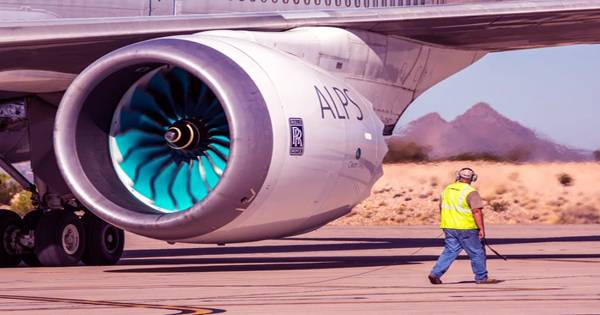According to scientists, their newly developed hypersonic jet engine could reach speeds of up to 16 Mach – 19,000 kilometers per hour (11,850 miles per hour) – and was stable during testing in an air tunnel. Press it on a plane and you can reach anywhere in the world in two hours. Their results were published in the Chinese journal Aeronautics.
The commercial supersonic aircraft has been kept on backburners in Western countries since Concord’s retirement. While innovation in high-speed engines continued, a number of serious problems with high-speed engines prevented their growth. Thus, instead of pushing the speed limit, scientists have focused on increasing fuel efficiency, reducing aircraft’s carbon footprint, and increasing passenger capacity. However, a group of scientists in Beijing has never looked at the award – and they have just crossed a huge milestone.
The team claims that their engine, named Sodramjet, represents a significant advance in hypersonic propulsion. The authors write in the paper, the “70 years” search on hypersonic performance indicates that the concept of revolution is really necessary for the development of hypersonic air-breathing engines. The Sodramjet engine concept can be a very promising choice and the work presented here strongly supports this concept.”
Sodramjet is based on an existing technology known as Ramjet, which has been in development since Hungarian inventor Albert Fonó used a crude Ramjet unit to expand the range of artillery. While ordinary jet engines use a short section of fan blades to compress the air from the front feed before sending combustion, the Ramjets rely on the front speed of the aircraft for compressed and fast-moving airflow. Then there was a breakthrough in ramjet to create supersonic-combustion ramjet (scramjet), which blows air through the engine at supersonic speeds as opposed to a ramjet that slows down the air before fuel.
Supersonic air creates shockwaves that can burn fuel. Scramjets suffer some fatal errors. As you can probably imagine, the engines stop producing thrust while the plane is in the air for fairly uncomfortable journeys.
Sodramjet was stable at hypersonic speeds and its hydrogen fuel burned roses at higher speeds more efficiently. Their results prove that the internal shockwaves of hypersonic engines can maintain internal combustion in line with Morrison’s concept of about 40 years ago.
Instead, Zonglin Jiang and colleagues at the Chinese Academy of Sciences, Beijing, concentrated on the work of engineer Richard Morrison in the 1980s. Although his ideas never saw commercial application due to lack of money and a choice to follow other ideas, Jiang implemented the idea in Sodramjet and the results speak for them. He believed that the shockwave engine produced by Supersonic Air could pack enough power to re-run the engine regularly and maintain speeds of Mach 15 or higher.
Incredibly, the Sodramjet engine is still many years away from the use of commercial aircraft. In addition, there are still issues that can still be resolved before the engine is fully operational. Shocks that regenerate the combustion can maintain firmness but this, in turn, produce surges in the engine which affects its stability. Also, speeds of this nature have been described in air tunnels using Scramjet but have not been verified on the aircraft, so the engine will require many more tests before commercial use.
















